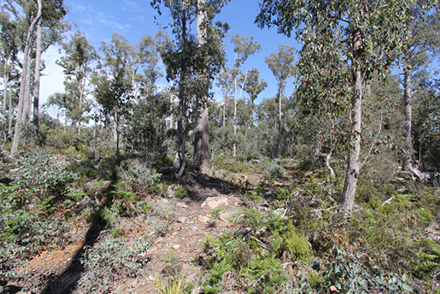
VEAC’s concept of conservation in Central West Victoria is simplistic, ignores the historic role of Aborigines in forest management and will do little to protect threatened species, according to a community forest group. Source: Philip Hopkins for Timberbiz
Instead, an expert panel should rewrite Victorian conservation legislation, says the South East Timber Association (SETA). This rewritten legislation should enshrine the principles of active and adoptive management into the conservation regulatory framework.
SETA, based in south-east New South Wales, includes several forestry scientists and supports small forest communities. VEAC’s final report into the Central West recommends a massive expansion of parks and reserves and huge cutbacks in the forestry industry.
SETA said VEAC did not recognise that some of the underlying principles driving “protection” were rooted in the myth of ‘terra nullius’.
‘High quality wilderness’ was an artefact of European neglect, rather than maintaining the pre-1750 distribution of each forest type that was actively managed by Aborigines.
“Consequently, much of the conservation reserve system seeks to preserve slabs of land covered by native vegetation, altered in structure and in places, species composition,” SETA said.
Earlier VEAC reports, including the River Red Gum Forest report of 2008, had not recognised the adaptation of Victorian ecosystems to regular disturbance over tens of thousands of years before Aboriginal peoples’ dispossession.
“What VEAC looks at today and calls ‘natural’ biodiversity, is an artefact of 200 years of European management and/or neglect, that is fundamentally different to management applied by Aboriginal people,” SETA said.
These simplistic assumptions implied that if timber harvesting was stopped and recreation curtailed, the current environmental values and threatened species would be “saved”.
SETA said many of the 375-threatened species would not be saved by simply changing land tenure. All public land, including reserves, should embrace the principles of active and adaptive management.
“Key tools … will include thinning of regrowth, a return of cultural/ecological burning across significant parts of the landscape, if Victoria is to reverse the current extinction trajectory for many threatened species,” SETA said.
“The passive neglect management approach will be locked in, as soon as most of the current area of state forest is transferred to the parks and reserve system.”
SETA said the Reference Areas Act 1978 holds up neglected, overgrown and moribund areas of native vegetation as the reference against which parks and reserves can be benchmarked.
“With the bar set so low, it is little wonder that across Australia, as the area of ‘protected land has increased, the threatened species list has continued to escalate,” said SETA, which made four key recommendations:
- VEAC should shelve all proposed new parks and reserves in Central West Victoria and urge the Government to repeal the Reference Areas Act 1978.
- The Government should direct an expert panel to lead a rewrite of Victorian conservation legislation to enshrine the principles of active and adaptive management into the conservation regulatory framework.
- Before new parks and reserves are added, the Government should direct VEAC to review all previous investigation recommendations to gauge whether previous land tenure changes have actually enhanced biodiversity.
- An expert panel should provide guidance on how to bring back ecological and fuel reduction burns and provide DEWLP and other land management staff expertise to refine burning strategies.
SETA said VEAC needed a question answered: how to use fire intelligently to help restore the habitat of threatened plant species. This question must be answered if plant species that were relatively common before Europeans arrived, were to be returned to the landscape that had not been permanently converted to other land uses.
“It is not clear what ‘protection’ means. If protection means total fire exclusion, the likely end for this special value species is likely to be eventual death from old age or disease,” SETA said.
The other possibility was death in the inevitable catastrophic wildfire from heavy fuel loads that accumulate in long unburnt landscapes.
“The apparent one-dimensional view of fire tends to support fire exclusion policy, rather than the intelligent use of fire to improve ecological outcomes and reduce the intensity of future wildfires,” SETA said.





